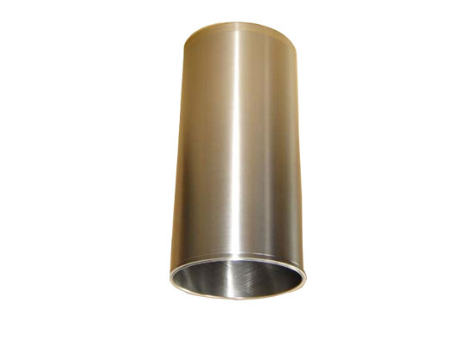CNC Turning Thin-Walled Parts Processing Difficulties, Challenges, Methods & Improving Tips | Dajin Precision
As the thickness of thin walled CNC turning parts is low and rigidity is poor, the most notable problem in machining thin wall product is deformation, once the deformation exceeds the allowable value, the unqualified parts will be produced. It’s important to find out the challenges in thin-walled parts CNC turning process, what are the reasons and solutions or tips for that.

What are Thin-Walled Parts?
Thin-walled parts are precision components with value of wall thickness is much smaller compared to other dimensions of the part, like thin-walled pipe, thin-walled tubing, thin-walled pressure vessel and more.
CNC Turning Thin-Walled Parts Processing Difficulties, Challenges and Reasons
During the CNC turning process, the main challenge for machining thin wall parts is the deformation, which may caused by the cutting force, which leads to the shape become ellipse or small in the middle and big at both ends. In addition, due to the casing of thin wall workpiece, poor heat dissipation further resulting in thermal deformation.
1.The thin walled parts can not bear large radial force, so it is difficult to install with general clamps.
2.Unreasonable clamping program, improper clamping force, and poor rigidity of thin wall parts lead to large clamping deformation.
3.The elastic recovery of workpiece under normal conditions will affect the dimensional accuracy and shape accuracy.
4.Unreasonable fixture design causes positioning error.
5.The cutting heat will also affect the control of parts dimension accuracy.
6.Due to the influence of cutting force, the workpiece is prone to deformation or vibration, and results in low surface quality and inaccurate size of parts.
7. If the cutting amount is too large, the production efficiency will be influenced.
Tips for Improving Thin-Walled Parts CNC Turning
Based on the problems in the CNC turning of thin-walled parts, you should take full considerations in selecting machining equipment, process, fixture design, setup and more aspects, then choose the best condition.
(1) Make the clamping force as uniform as possible
For general parts processing, three jaw chuck positioning and clamping can meet the processing needs. However, for thin-walled parts, there are high requirements for the machining accuracy, and form-position error. Improper clamping positioning will affect the quality of parts due to clamping deformation. Therefore, increasing the number of clamping points and enlarge the contact area between claw and workpiece are effective measures to reduce the deformation of turning thin-walled parts.
(2) Change the positioning and clamping design
In the turning process, the workpiece is positioned through external circle or internal hole, use claw to determine circle with 3 points. In order to reduce the influence of the circumferential (radial) clamping positioning on the dimensional accuracy of the workpiece, it can be realized by changing the pressing mode, that is, changing the radial clamping to the end face positioning clamping. It can avoid workpiece deformation, enhance the cutting resistance by increasing the end face friction.
(3) Adjust processing parameters to weaken the effects from cutting force
We have known that too much cutting force can also cause local deformation of CNC turning thin-walled parts. The deformation of workpiece caused by cutting force can be controlled by reasonable selection of cutting parameters and tool geometry parameters. High speed machining is an effective method. Higher spindle speed not only helps to reduce the cutting force, but also can take most of the cutting heat away from the workpiece, reducing the impact of cutting heat on the part. Reasonable tool angle can also change the cutting force state. Generally speaking, not only decreasing the cutting depth; but also a larger tool cutting edge angle, a slightly larger rake angle and a smaller tip arc radius can also help reduce the cutting force.
(4)Add auxiliary support to CNC turning thin-walled parts
When turning thin-walled parts with high precision of inner hole, auxiliary support can be used to increase the rigidity of workpiece.
Machining Methods of Thin Wall Parts
How to machine turning thin wall parts? Here is the recommended workflow and methods.
1.Roughing then finishing
First roughing the outer circle and inner hole of the part, evenly leave a margin of 0.5-0.8mm for the outer circle and inner hole, and leave a margin of 0.25-0.3mm for the single side of the end face, then select the appropriate clamping method to finish the part to the drawing size requirements.
2.Internal then external
First processing the inner hole, which is more difficult to be processed than the outer circle and easy to deform. Then, to machine the outer circle, use the mandrel clamping, and the inner hole can be positioned and clamped axially, so as to prevent the machining accuracy from being affected.
3.One time completion
Machining all required dimensions in one clamping, mainly used for the machining of blank, bar or thin-walled parts with process table.
4.Turning on disc chuck
The thin-walled workpiece with large diameter, high dimensional accuracy and form-position accuracy requirements can be clamped on the disc chuck for processing.
